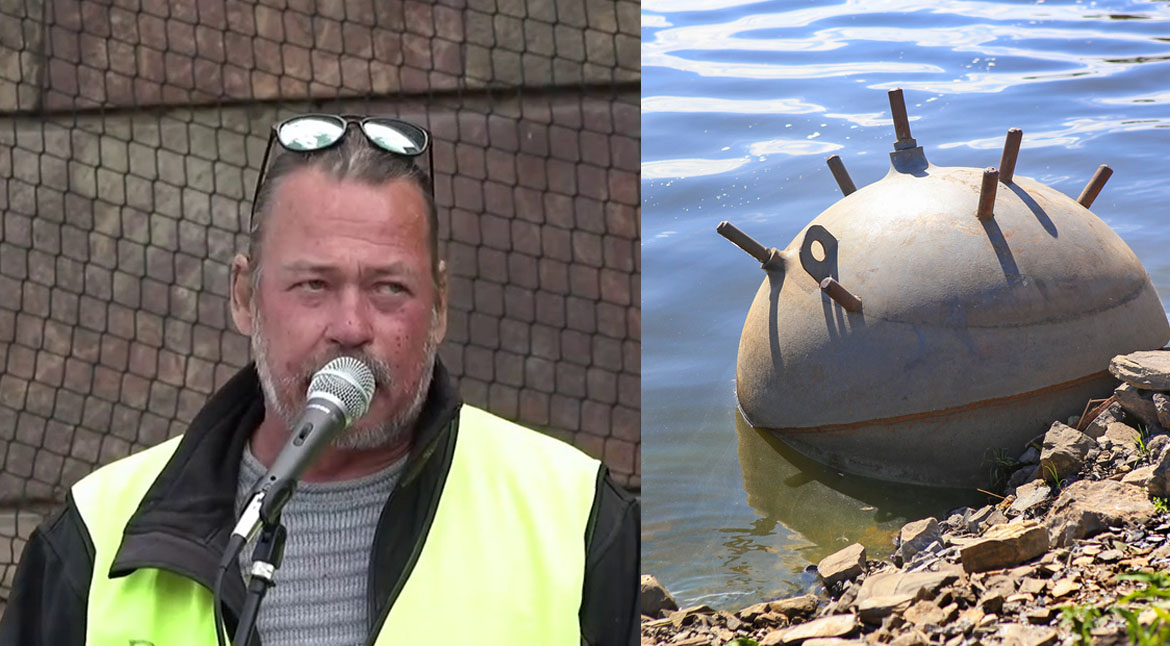Håkan Bergmark was a diver in the Swedish Navy. He has had several assignments linked to the Soviet submarine that ran aground off Karlskrona and the Estonia catastrophe in 1994. Mr Bergmark assesses the consequences of mines in the Baltic Sea.
Sweden’s membership of NATO has many disadvantages, while Article 5 on so-called ‘solidarity intervention’ in the event of a NATO country being attacked can be regarded as a safeguard. However, this ‘security’ is overshadowed by the disadvantages of membership.
Worse is the US agreement known as the DCA (Defence Cooperation Agreement). It gives up large parts of our territory to US military jurisdiction and allows the US to place long-range weapons in Sweden without anyone’s oversight or control.
Even worse are the plans to mine the Baltic Sea.
On the very first day of the first NATO meeting in Washington, attended by Sweden as a full member, a decision was made that could affect our neighborhood.
Nine European NATO countries, including Sweden, Denmark, Norway, and Germany, have agreed to an initiative by German Defence Minister Boris Pistorius to develop, purchase and stockpile anti-ship mines to mine the Baltic Sea.

The stated idea behind the initiative is to deter Russia from aggression and expansion in the region.
Mines are an insidious and terrible weapon. This is how the Swedish Defence Forces describe the problems of clearing and defusing old mines.
”A mined waterway or harbor entrance can force an adversary to take long detours or prevent access altogether. Under the Geneva Convention, mines must be carefully documented and publicized so that third parties are not harmed by them.
Today, the documentation and archiving of minefields is much more accurate than in the 1920s and 1940s. The mines laid during the two world wars have been documented in different archives, but are not in a common database.”

As a trained clearance diver whose main task is to search for, find, and neutralize mines and other dangerous objects such as torpedoes and bombs, we know the scale of the quantities dropped during the last World War.
Over these 70 years, hundreds of mines have been found and neutralized, often far from where they were once placed. So even if their deployment is carefully documented, there is no guarantee that they will not naturally move or be moved.
The plans for the mine are said to be finalized. When it will be implemented is unclear.
Mining the Baltic Sea is risky and expensive
The Swedish government seems determined to provoke aggression from Russia at all costs and thereby make Sweden, the Baltic Sea, and the Northern Calotte a theatre for the next world war.
EurAsian Times writes in January 2023:
”Australia is moving forward with its plans to purchase advanced sea mines to defend its territorial waters from Chinese and other potential enemies’ naval incursions, according to the Sydney Morning Herald.
The government will spend up to $1 billion on procuring high-tech underwater weapons.”
During the Second World War, the biggest Swedish casualties were sailors who lost their lives from mine blasts, torpedoes, and, in exceptional cases, British fighter planes. It has been estimated that at least 1500 Swedish civilian sailors were killed.
Sweden’s ore boats to Hitler often traveled with German escorts and thus fell prey to both Russian and Allied attacks. Many cases were also blasts from our mines.
The Baltic Sea is an important trade route for around 80 million inhabitants in its immediate catchment area and 10 nations are affected. The consequences of a mine strike could also be devastating for merchant fleets, fisheries and recreational boats.
By Håkan Bergmark (Rumble)
Related
- Swedish Armed Forces: Demining and mine clearance
- Swedish Armed Forces: Not just demining
- EurAsian Times: Australia To Buy ‘Smart Sea Mines’ In Billion Dollar Deal That Can Differentiate Between Military & Civilian Ships

